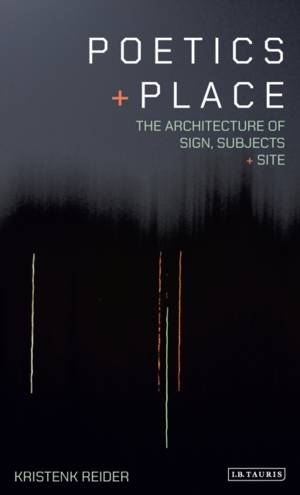
Bedankt voor het vertrouwen het afgelopen jaar! Om jou te bedanken bieden we GRATIS verzending (in België) aan op alles gedurende de hele maand januari.
- Afhalen na 1 uur in een winkel met voorraad
- In januari gratis thuislevering in België
- Ruim aanbod met 7 miljoen producten
Bedankt voor het vertrouwen het afgelopen jaar! Om jou te bedanken bieden we GRATIS verzending (in België) aan op alles gedurende de hele maand januari.
- Afhalen na 1 uur in een winkel met voorraad
- In januari gratis thuislevering in België
- Ruim aanbod met 7 miljoen producten
Zoeken
Omschrijving
How do artworks 'speak', and how do we 'listen'
and respond? These questions underlie the
investigation here of Roni Horn's Pair Object
III: For Two Rooms, Emily Dickinson's later
manuscripts, Theresa Hak Kyung Cha's Passages
Paysages, Fiona Templeton's Cells of Release and
Jenny Holzer's Lustmord. The tenets of critical
performance, art-writing and site-writing
inform the critical method used in Poetics
and Place. Each chapter is dedicated to one of
these five artworks, and is arranged in order
to fulfil three main objectives: to understand
how the artworks generate meaning through a
material poetics in relation to place; to develop
a critical methodology for engaging with them;
and to investigate their ethical potential and
political imperative. All of this, ultimately,
facilitates the development of a triadic relation
between theoretical concepts of sign, subject
and site at the crossover between poetry,
art and spatial practices. This extends each
artwork beyond the dyad of a critical encounter
in order to offer - and allow others to grasp
- an appreciation of how the artwork figures
meaningfully, as well as configures meaning,
in the wider world of objects and things. The
book concludes with a discussion of the ethics
of reading from the second person, opening up
a debate concerning the role of empathy within
contemporary, politically engaged practices in
art and poetry.
and respond? These questions underlie the
investigation here of Roni Horn's Pair Object
III: For Two Rooms, Emily Dickinson's later
manuscripts, Theresa Hak Kyung Cha's Passages
Paysages, Fiona Templeton's Cells of Release and
Jenny Holzer's Lustmord. The tenets of critical
performance, art-writing and site-writing
inform the critical method used in Poetics
and Place. Each chapter is dedicated to one of
these five artworks, and is arranged in order
to fulfil three main objectives: to understand
how the artworks generate meaning through a
material poetics in relation to place; to develop
a critical methodology for engaging with them;
and to investigate their ethical potential and
political imperative. All of this, ultimately,
facilitates the development of a triadic relation
between theoretical concepts of sign, subject
and site at the crossover between poetry,
art and spatial practices. This extends each
artwork beyond the dyad of a critical encounter
in order to offer - and allow others to grasp
- an appreciation of how the artwork figures
meaningfully, as well as configures meaning,
in the wider world of objects and things. The
book concludes with a discussion of the ethics
of reading from the second person, opening up
a debate concerning the role of empathy within
contemporary, politically engaged practices in
art and poetry.
Specificaties
Betrokkenen
- Auteur(s):
- Uitgeverij:
Inhoud
- Aantal bladzijden:
- 256
- Taal:
- Engels
- Reeks:
- Reeksnummer:
- nr. 34
Eigenschappen
- Productcode (EAN):
- 9781780763378
- Verschijningsdatum:
- 19/12/2013
- Uitvoering:
- Hardcover
- Formaat:
- Genaaid
- Afmetingen:
- 142 mm x 216 mm
- Gewicht:
- 430 g

Alleen bij Standaard Boekhandel
+ 542 punten op je klantenkaart van Standaard Boekhandel
Beoordelingen
We publiceren alleen reviews die voldoen aan de voorwaarden voor reviews. Bekijk onze voorwaarden voor reviews.









